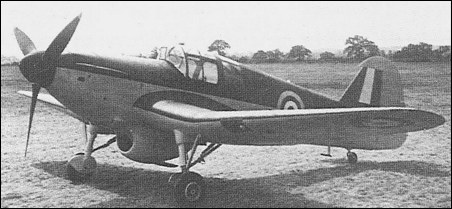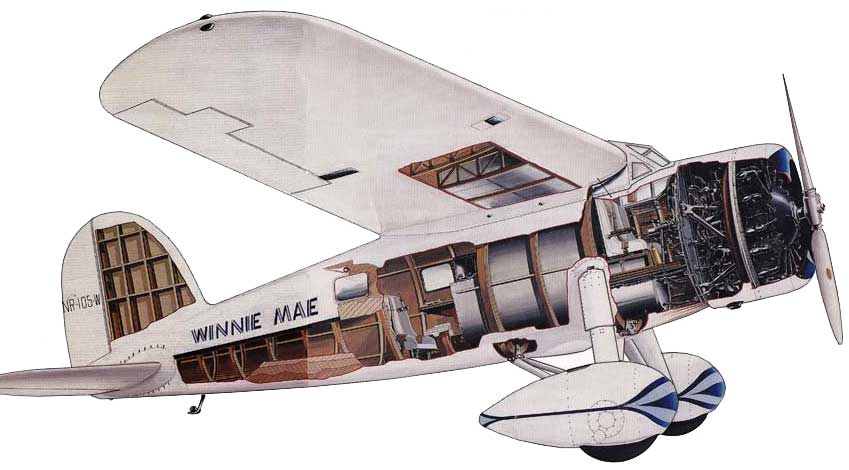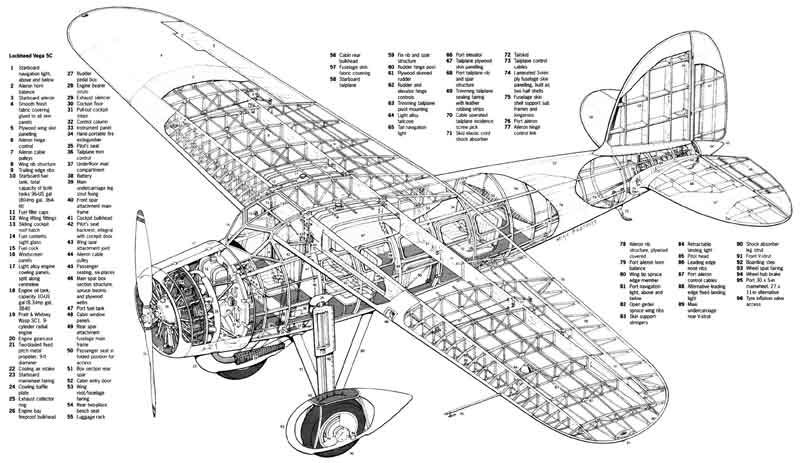
This picture purports to be of one of the 26 Mile Master M26 fighters converted. Single seat, six guns in the wings. The previous image I posted does look like the prototype Miles Kestrel with added guns!

I am a bit concerned about engine upgrade for these airframes. Bristol Mercury in 1938 was nearing growth limit, with power stagnating around 800 hp. Quite different from 1500hp Allison V-1710 which transformed P-36 to formidable P-40.
Using Bristol Pegasus or Hispano-Suiza 12Y as replacement will help only marginally as these engines were also limited to 1000 hp.
Using Allison V-1710 may be fine, but it was about 50% heavier, likely leaving no space for armament even if it would be possible to install much heavier engine at all.
Structural problems of wings likely mean SAI.207 can not be fitted with combat flaps. Also, it was below-average climber.
Well, summarizing..if we are allowed any airfoil, hybridizing P-36/P40 fuselage with the wings of Ki-43 may give an ideal fighter/interceptor. Maneuverable, with 12.7mm weapon mount from beginning, and engine upgrade-able up to 1500 hp.
Realistically, i can imagine Nakajima covertly selling the wrecked Ki-43 11th prototype airframe in 1939 to make up the losses after been ordered to give up on it, may be after in-flight disintegration due clear-air turbulency (instead of making more mods and succeeding IOTL with 13th prototype). The Ruralia engineers reverse-engineer the Fowler flaps and overall wing profile, and re-make it in A2024 alloy - to be mated with P-36Q fuselage which is already license-produced. The result is super-maneuverable and long-range P-36, although slightly heavier than original Ki-43 (510 km/h speed and 17 m/s climb rate).
Any idea what airfoil the CW-21 used? I found one listing forThe airfoil of the Ki-43 is of 18% thickness at root, ie. far draggier than the 15% thick wing on the P-36, let alone a 13% thick wing of a Spitfire or 14% thick wing of the Bf 109.

The OP stated this was a panic fighter, the Pegasus, 12Y and Mercury are immediately available mature designs that meet the immediate needs for such a fighter and have been widely produced under licence in a number of countries. While they limit the long term potential of an aircraft as an interceptor, once that point has been reached the resulting aircraft will still be viable as ground attack aircraft.I am a bit concerned about engine upgrade for these airframes. Bristol Mercury in 1938 was nearing growth limit, with power stagnating around 800 hp. Quite different from 1500hp Allison V-1710 which transformed P-36 to formidable P-40.
Using Bristol Pegasus or Hispano-Suiza 12Y as replacement will help only marginally as these engines were also limited to 1000 hp.
Using Allison V-1710 may be fine, but it was about 50% heavier, likely leaving no space for armament even if it would be possible to install much heavier engine at all.
.
marathag,
That beautiful cutaway drawing of the CW-21 structure is my best argument for a small nation with no metal construction experience to follow Lockheed's 1932 example. The simplicity of fabrication outweighs any imagined weight penalty. Unquestionably the use of casein adhesives, widely available in the late thirties, combined with mittel-European weather would limit airframe durability out in the rain but they would certainly last as long as combat operations would (hypothetically) require. Design of an airplane is much more realistic than the sudden creation of an industry.


This is the picture before I altered it. It's the original Kestrel Trainer prototype. Even as is it could have served as a (grossly under armed) emergency fighter.View attachment 391244
Here is a picture of the Miles Kestral/Master emergency light six gun fighter from 1940. The Kestrel first flew in1937 and therefore realistically this fighter version could have been available from 1988

That is one of the reasons I opted for the 12Y for the Kestrel Fighter. It was designed to allow the use of an engine mounted 20mm as was done in the French MS-406 fighter.For a panic fighter against other fighters and twin engine bombers, would 4x .50 cal/12.7mm be adequate (not ideal) given the limitations on this "panic fighter" - given the requirements and the engine limitations, adding cannon is nice but may compromise performance too much.
That is one of the reasons I opted for the 12Y for the Kestrel Fighter. It was designed to allow the use of an engine mounted 20mm as was done in the French MS-406 fighter.
My what if version of the Westland Whirlwind has it equipped with 12Ys instead of the more often talked about Merlin. In my opinion the 12Y is the engine Rolls Royce hoped the Peregrine would be and as the Soviets proved still had a fair amount of development potential, at least for 2nd rank air forces.
I think the German's might have something to say about it being the best non Merlin engine though. (Hears loud murmurs about the DB601 coming from over the North Sea)
Later HS 12Z was able to run on 100 octane fuel, delivering some 1300 hp.Hence the qualifier 'before 1939' - apart from one-offs, prototypes etc, the DB 601 was being installed in the Bf 109s from spring of 1939, with airframe production outstripping the engine production (similar situation happened with Ki 61 and Merlin Mustang) in that year.
Peregrine was still a bit better than HS 12Y, it was able to run well both on 87 (+6.75 psi for 885 HP at ~5km) or 100 oct fuel (+9 psi boost; around 1000 HP at 3-4 km), was smaller, but without a provision for a prop cannon. Most importantly, it was later in the game than Merlin, let alone the HS 12Y.
For a what-if - the HS12Y is license produced in Britain instead of the hopeless Alvis Pelides, or, even better, instead of the Napier Dagger.
Dear Marathag,
Thanks for posted those beautiful cutaway drawings of Lockheed Vegas.
Your description of chemical engineering is also helpful.
WI a scion of a Ruralia timber magnate family returns from Stuttgart University with a duelling scar, a chemical engineering degree and lab experience formulating early versions of epoxy resin?
WI he is seconded to the family-owned canoe factory that is struggling with a shortage of birch bark?
WI he develops a canoe made of wooden ribbons bonded together with epoxy resin?
WI his cousin returns with a chemistry degree and a Masters’ Thesis on nylon 6?
WI the second cousin is loaned to the family-owned fish-net factory?
